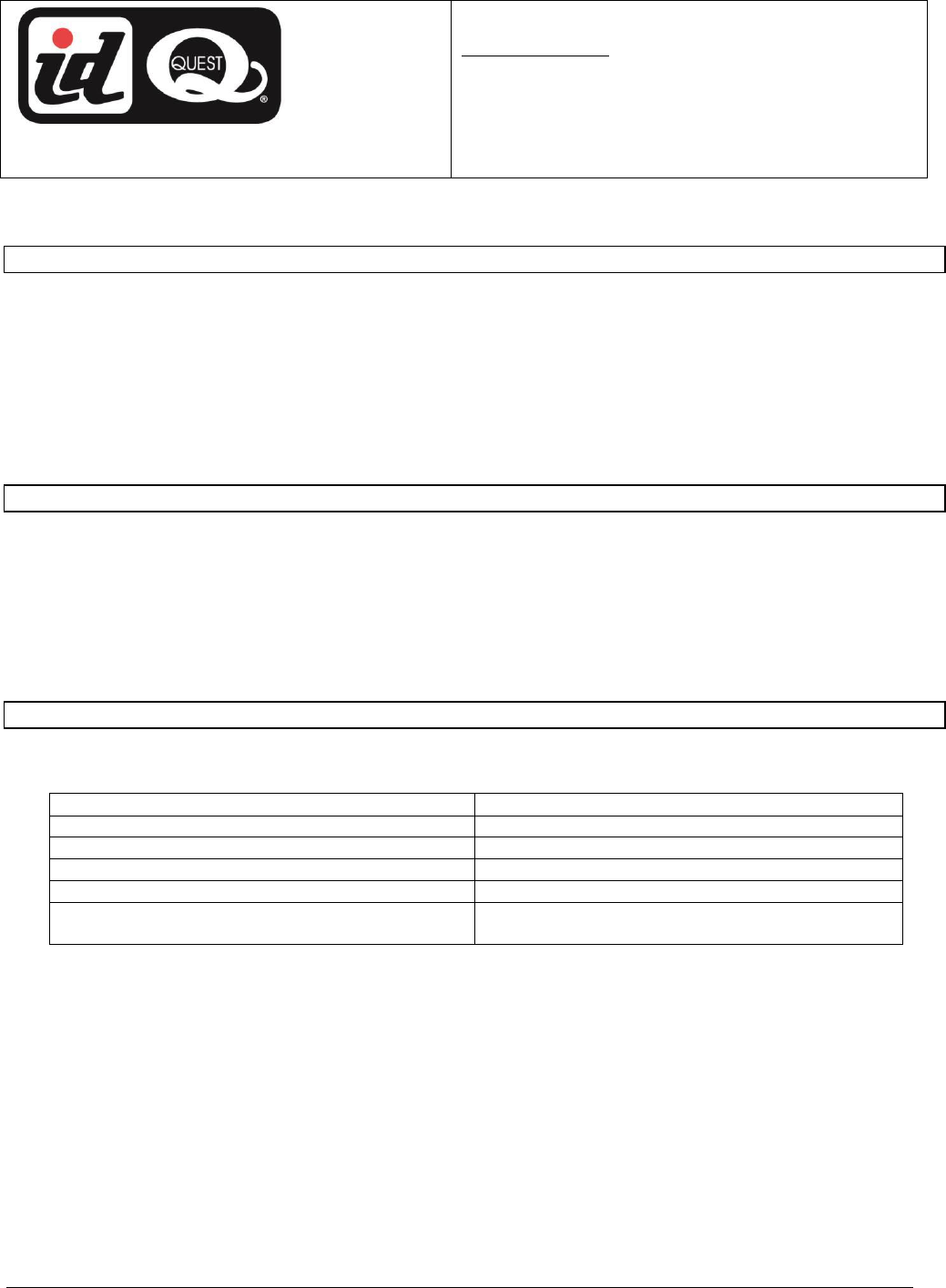SDS

Safety Data Sheet
IDQ Operating, Inc.
44 Old Ridgebury Road
Suite 300
Danbury, CT 06810
Tel. 1-203-205-2900
IDQ ACP-100 Page 3 of 6
bursting cans.
6: Accidental Release Measures
Personal Precautions, Protective Equipment, and Emergency Procedures: Ventilate the area. Wear
appropriate protective clothing and equipment.
Methods and Materials for Containment and Clean-Up: Place leaking can in a pail in a well-ventilated area until
pressure has dissipated. Collect residual liquid using inert absorbents and place into a suitable container for
disposal.
Environmental Precautions: Report release as required by local and national regulations.
7. Handling and Storage
Precautions for Safe Handling: Avoid contact with eyes and skin. Avoid breathing aerosol or gas. Use only with
adequate ventilation. Wash thoroughly with soap and water after handling. Contents under pressure, do not
puncture or incinerate containers. Refer to OSHA 1910.1052 (methylene chloride standard) for additional
requirements.
Conditions for Safe Storage, Including any Incompatibilities: Store in a cool, well-ventilated area, away from
incompatible materials. Do not store in direct sunlight or above 120°F.
8. Exposure Controls / Personal Protection
Exposure Guidelines:
CHEMICAL
EXPOSURE LIMIT
1,1,1,2-tetrafluoroethane
1000 ppm TWA AIHA WEELs
Polyalkylene glycol monobutyl ether
None established
Additive Package
None established
Oil Additive
None established
Methylene chloride
50 ppm TWA ACGIH TLV
25 ppm TWA, 125 STEL OSHA PEL
Appropriate Engineering Controls: General ventilation should be adequate for normal use. For operations where
the exposure limits may be exceeded, forced ventilation such as local exhaust may be needed to maintain
exposures below applicable limits.
Personal Protective Equipment
Respiratory Protection: None under normal use conditions. For operations where the exposure limits may be
exceeded, a NIOSH approved supplied air respirators recommended. Equipment selection depends on
contaminant type and concentration. Select in accordance with 29 CFR 1910.134 and 1910.1052; all applicable
laws and regulations; and good industrial hygiene practice.
Gloves: Wear impervious gloves to avoid skin contact.
Eye Protection: Safety glasses are recommended if eye contact is possible.






